- About
- Courses
-
Destinations
EuropeNew Zealand
- Journal
- Contact
If you’re a snowboarder longing to explore the backcountry with nothing but human-power, splitboarding is how you'll do it. Serene surroundings, meditative uphill climbs and untracked snow are the rewards for those willing to earn their turns. All you need is a little backcountry know-how, the right gear, and a splash determination.
Back in the day, snowboarders wanting to ride deep snow away from the groomed slopes of a resort had to use snowshoes to travel uphill. Skiers climbed much more quickly, used far less energy and subsequently enjoyed more runs each day out touring. But thanks to the invention of splitboards, the playing field is now even.
What is a splitboard?
A splitboard is essentially a normal snowboard which splits into two halves. These halves become skis for travelling uphill, or touring.
To enable the rider to walk uphill, adhesive-backed ‘skins’ are attached to the base of the skis to provide traction on the snow.
Once at the top of the slope, the rider removes the skins, attaches the two skis together and it transforms back into a snowboard, ready for a well-earned descent through untracked powder.
Why splitboard?
Splitboarding gives you true freedom, enabling you to access untracked snow in the backcountry, and enjoy the serenity of the mountains away from the hustle and noise of commercial ski areas.
Plus, strange as it may seem, the uphill climbs are a great part of touring – meditative, social, and a good workout.
If you're ready to give splitboarding a go but need to brush up on your off-piste skills, check out our all-mountain snowboard camps. And if you're eager to earn your turns, our master the mountain snowboard camp builds your powder skills before a 4-day splitboarding trip to a remote backcountry cabin. For the ultimate backcountry thrill, our ready to heli snowboard camp has got you covered.
Is it really much fun to ride a splitboard?
In the early days, riding a splitboard felt somewhat heavy and cumbersome. However, these days they can provide a ride that's just as sweet as a normal snowboard.
They are no longer super heavy and some have features like reverse camber, which provides a lovely floaty and responsive ride. Additionally, there are now splitboard specific bindings that have further enhanced the splitboard experience.
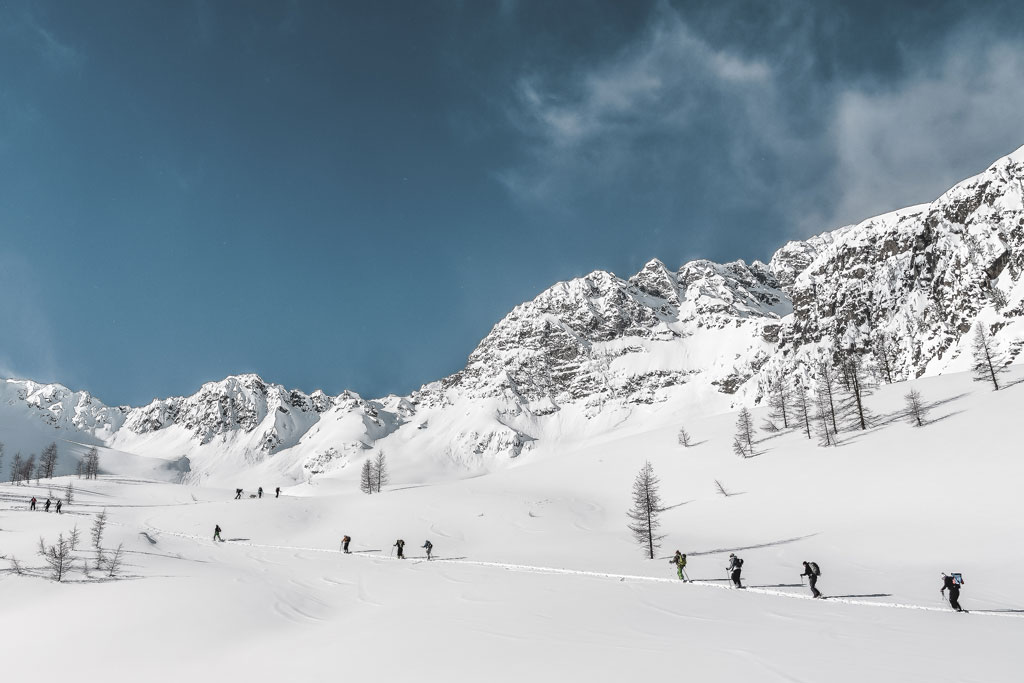
How a splitboard works
So, you've got your splitboard setup and you're ready to tour. Here's how it works.
1. You first need to remove the bindings from your splitboard. You do this by first removing the retaining pin, then sliding the bindings backwards off the binding plates and off the board. You'll now have a board with no bindings ready to be split into two halves
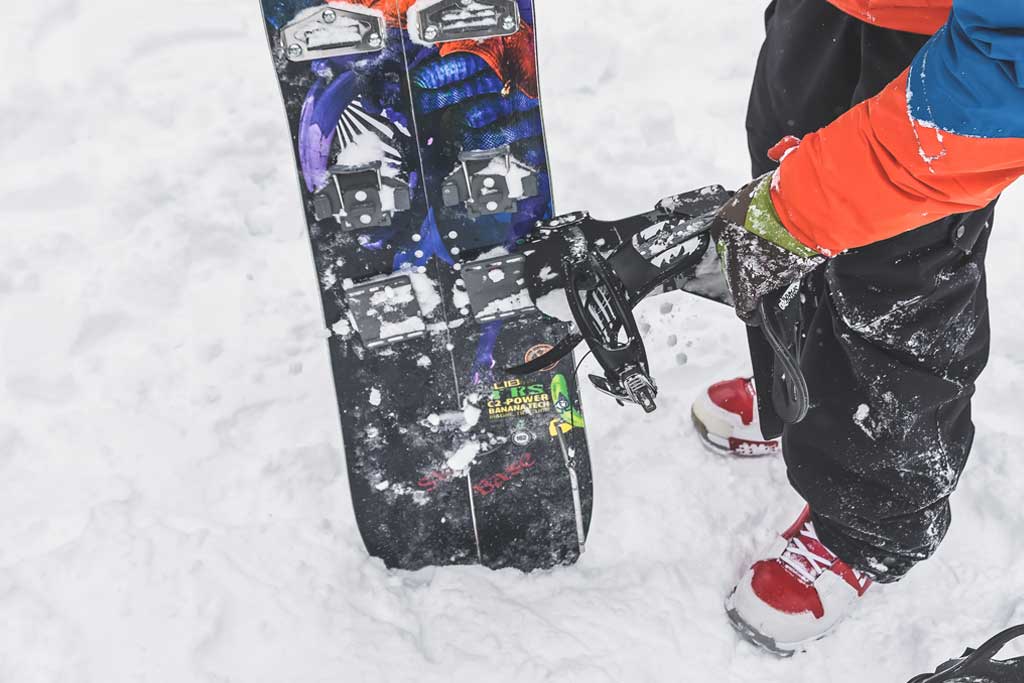
2. To split the board, unhook the clips at the nose and tail, and the board will come apart. You now have two planks – the long centre edge becomes the outside edge of your skis as it offers more edge to grip with.
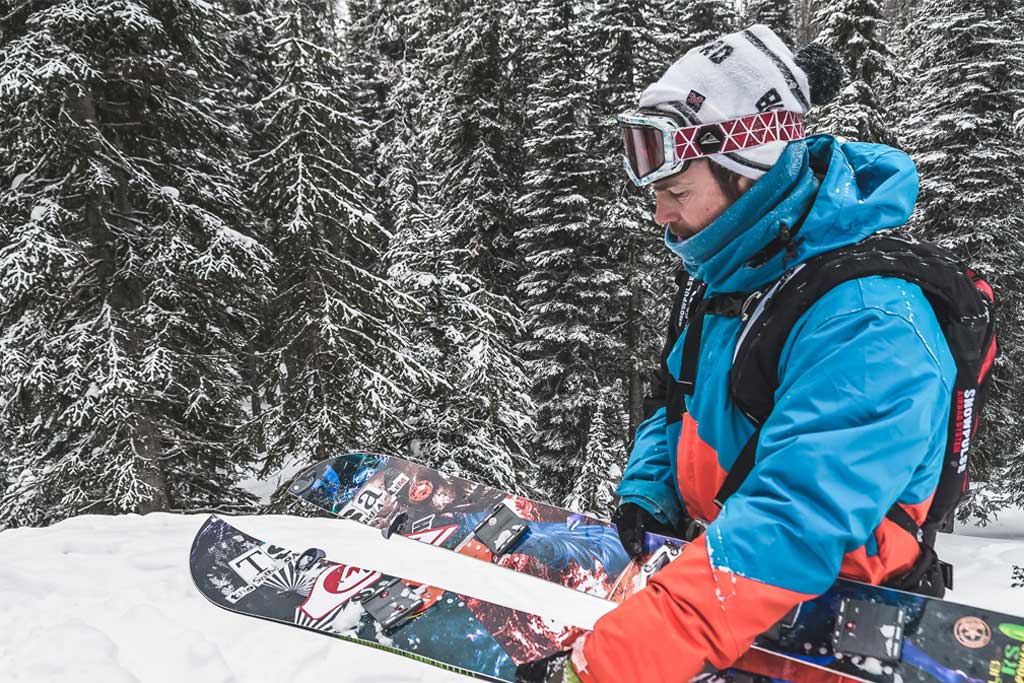
3. You now need to fix your bindings to your 'skis'. Position the bindings in the uphill position – along the ski – and attach the toe end with the retaining pin. Your heel can move up and down as you walk. Risers below the binding help on the steeper sections.
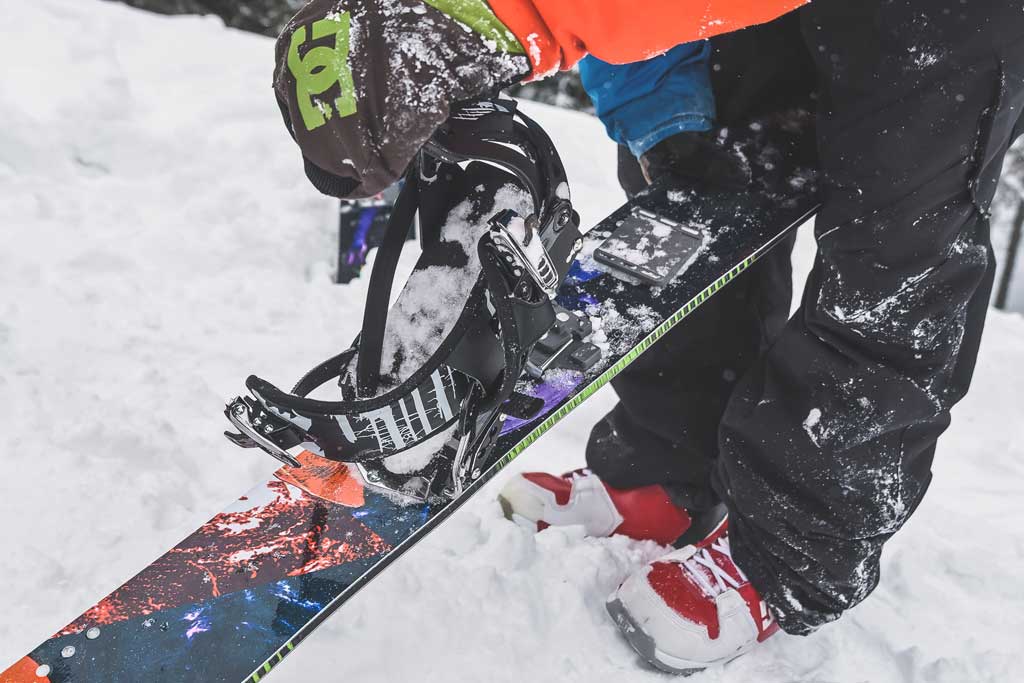
4. Get your climbing skins from your backpack and pull them apart. The glue can be super strong so you’ll need to be forceful. Clip the front of the skin on the nose of the ski. Carefully align the skins onto the skis and press down firmly, especially at the tail.

5. You should now have two skis ready to climb that mountain. Before you set off you'll want some poles. Adjust them for your height and pack your bag for the uphill. At this stage, it can be a good idea to lose some layers as you'll quickly warm up and its best to prepare ahead rather than start sweating (dry = warm).
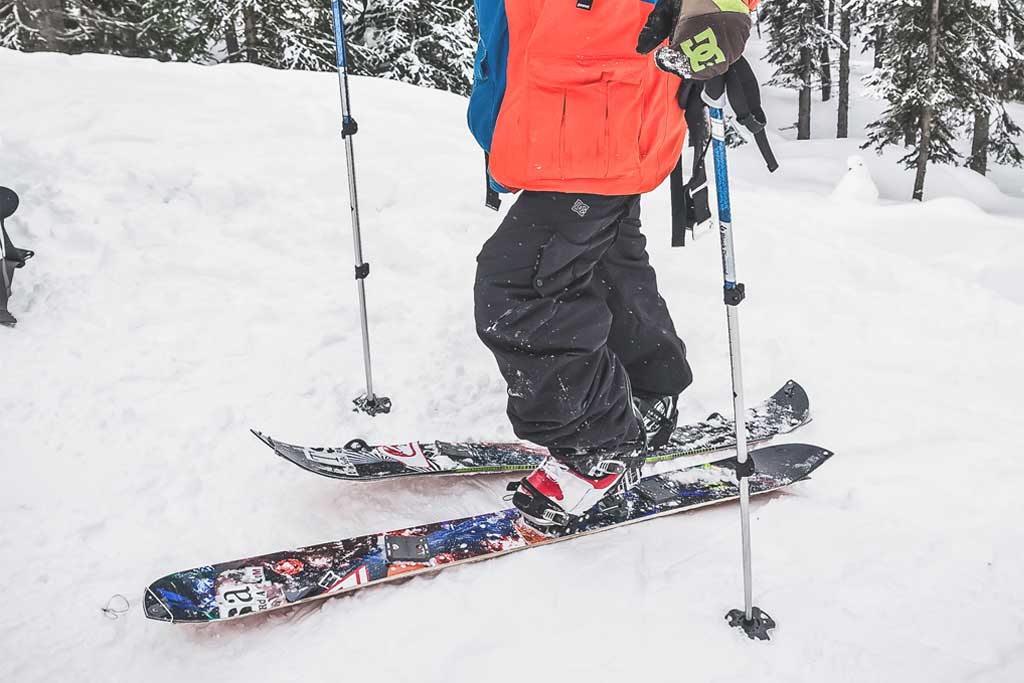
6. Ready to go... and not long until you'll be charging through untracked powder with just you and some mates. Before you head off, you need to transition back to downhill mode. You first need to remove and pack away your skins. Then remove your bindings from the uphill position, attach the board back together, and fix your bindings back into the downhill plates.

LEARN TO SPLITBOARD
Keen for a slice of backcountry? Our 4 week master the mountain camp in Canada focusses on off-piste riding skills, culminating with a 4-day splitboarding trip in remote backcountry. We also have a range of all-mountain snowboard camps to push your skills to the next level.
We look forward to speaking with you.